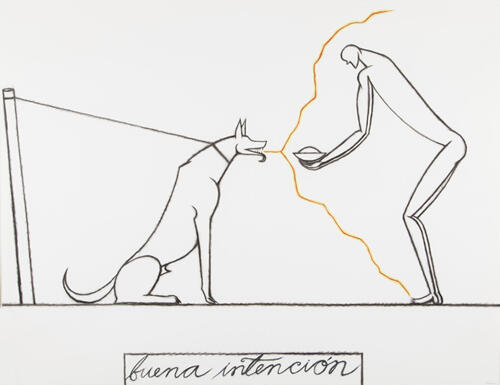Focus on Cuba: Three Exhibitions Open At Frost Art Museum, Miami
Exhibitions offering historical and contemporary perspectives on the art and artists of Cuba open at the Patricia & Phillip Frost Art Museum at FIU. Featured will be “Humberto Castro’s Tracing Antilles”; “Eternal Cuba: The Darlene M. & Jorge M. Pérez Collection at FIU”; and “From Africa to the Americas”.
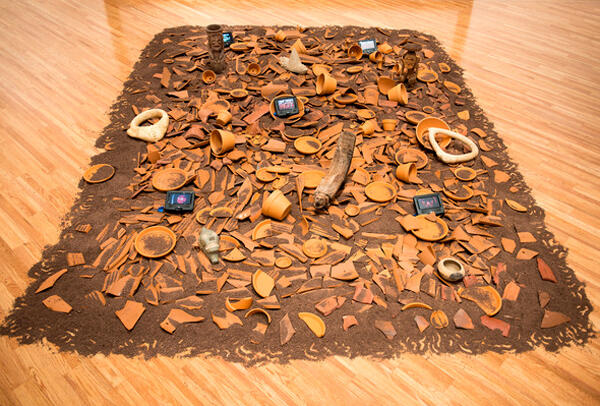
Humberto Castro: Tracing Antilles
Humberto Castro executes an artistic journey across the Antilles in an ever-transforming exhibition that conceptually circumnavigates the islands of the Caribbean. The Frost Art Museum commissioned the Cuban-born contemporary artist to create a new multi-media site-specific installation entitled Tracing Antilles. The exhibition, which runs through February 2, 2014, is the result of an artistic investigation of the historical events that have shaped the region’s cultures through colonization and emigration.
For this project, Castro traveled to Cuba and Haiti, where he collected material to be incorporated into the installation at the Frost. He stated that, “the purpose of this travel was to make real contact with the islands and their populations in an effort to understand long-term effects of colonialism.” Comprising the new installation is a captivating blend of large-scale oil paintings and bronze sculptures, found objects, traditional crafts, Pre-Colombian artifacts, photography and video—a revealing documentary of the historical and social complexity of the region in a visual fusion of the past with the present.
A member of the daring 1980s generation of Cuban artists that includes José Bedia and Rubén Torres Llorca, Castro has been exhibiting and winning awards since 1978. He has participated in numerous juried and invitational exhibitions as well as solo shows throughout Europe, South America, and the U.S. His work has influenced subsequent generations of artists within Cuba.Tracing Antilles is curated by Ana Estrada.
Eternal Cuba: The Darlene M. & Jorge M. Pérez Collection at FIU
With this historic selection of works, it is hoped to transcend political boundaries and focus on the island from the perspective of artists from many generations, diverse stylistic categories, and numerous influences, internal and external. Most significantly, the 24 works in the exhibition, which runs through December 8, have been chosen to give a glimpse of Cuba and Cuban artistic preferences, the way they were at the end of the nineteenth century, when the Academy of San Alejandro was in full control, and in the first half of the twentieth century, when a vanguard group asserted its independence and changed forever the path of Cuban artists into the modern world.
Among the artists included in the Eternal Cuba exhibition are Miguel Melero, Leopoldo Romañach, Augusto García Menocal, Antonio Rodriguez Morey, Eduardo Abela, Mirta Cerra, Manuel Mesa, Víctor Manuel García, Carlos Enríquez, René Portocarrero, Carlos Alfonzo and José Bedia.
Jorge Pérez posed the question: “What better way to tell the story of a nation than through itsart?” He went on to say that, “This is precisely why Darlene and I felt so strongly about donating these paintings by Cuban artists to Florida International University’s Frost Art Museum and its School of International and Public Affairs for its Cuban Research Institute. The intent of our donation was to reinforce FIU’s commitment to the interdisciplinary study of Cuba, which is so relevant, given the strong cultural ties many in South Florida have with the island.”
From Africa to the Americas
The rich symbolic legacy of the syncretism and rituals born of traditional African religion and Catholicism in Cuba and the Caribbean is but one reflection of the many complex identities that result with the intermingling of people over many years, and the particular circumstances of their relationships—whether by choice or forced imposition. From Africa to the Americas proposes to introduce the visual legacy of Africa to Cuba through a small, but key, selection of works of artand ethnographic objects. Included are works by José Bedia, Carlos Alfonso and Wifredo Lam, among others.
Frost Art Museum Director and Chief Curator Carol Damian explains that, “From the sixteenth through the nineteenth centuries, close to one million people from West and Central Africa were enslaved and transported to the Caribbean to work on plantations. In Cuba, the Yoruba were the principle ethnic group that had a major cultural impact, and the influence of their Orisha religion attracted many followers and artists. Their beliefs survived in an often hostile society through the association of Orisha deities with Catholic saints, creating the syncretic religion, Santería.Other syncretic practices also emerged on the island, including Palo Monte (Regla de Palo or Regla de Mayombé), and artists as initiates and practitioners revealed ritual symbolism as spiritual indicators, and as offerings to the gods. Spiritual belief and religious practice are at the core of this exhibition of African and Afro-Cuban works, which runs through January 5, 2014. Each one references the transformations from Africa to the Americas, and the journeys of a people and the astonishment of the spirit.
-
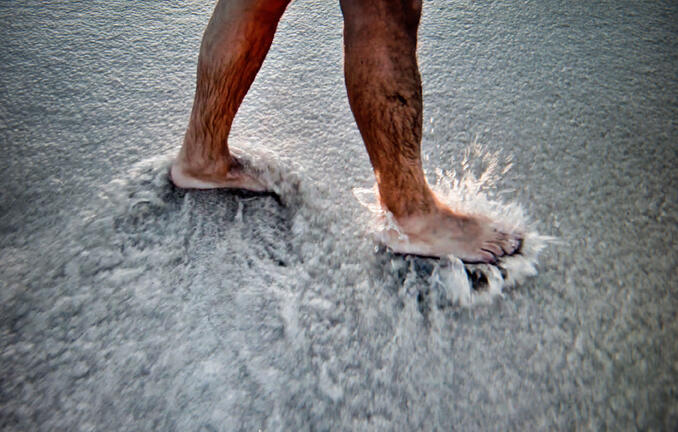 The Walker 2013 HD video
The Walker 2013 HD video -
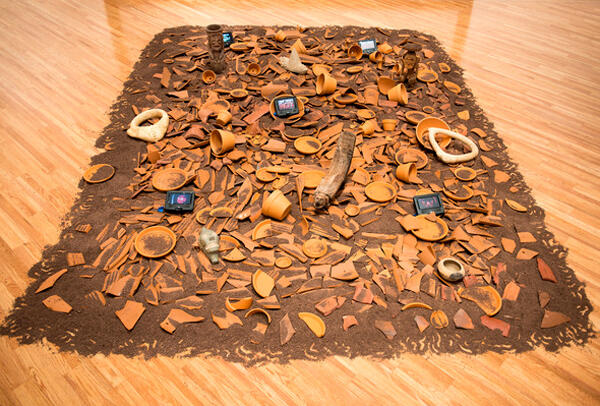 Deconstruction, Reconstruction (and detail), 2013, Installation with earth, ceramic shards, videos and Taíno artifacts from the Alfredo Carrada Collection, Dimensions variable
Deconstruction, Reconstruction (and detail), 2013, Installation with earth, ceramic shards, videos and Taíno artifacts from the Alfredo Carrada Collection, Dimensions variable -
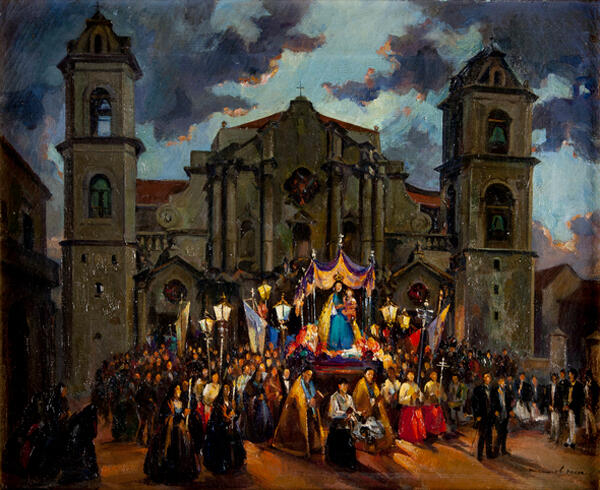 Procesión en la Habana [Una Procesión en 1830 en la Catedral de la Habana], 1930, Oil on canvas, 10 1/4 x 20 inches, Gift of Darlene M. and Jorge M. Pérez, UC 2013.1.18
Procesión en la Habana [Una Procesión en 1830 en la Catedral de la Habana], 1930, Oil on canvas, 10 1/4 x 20 inches, Gift of Darlene M. and Jorge M. Pérez, UC 2013.1.18 -
